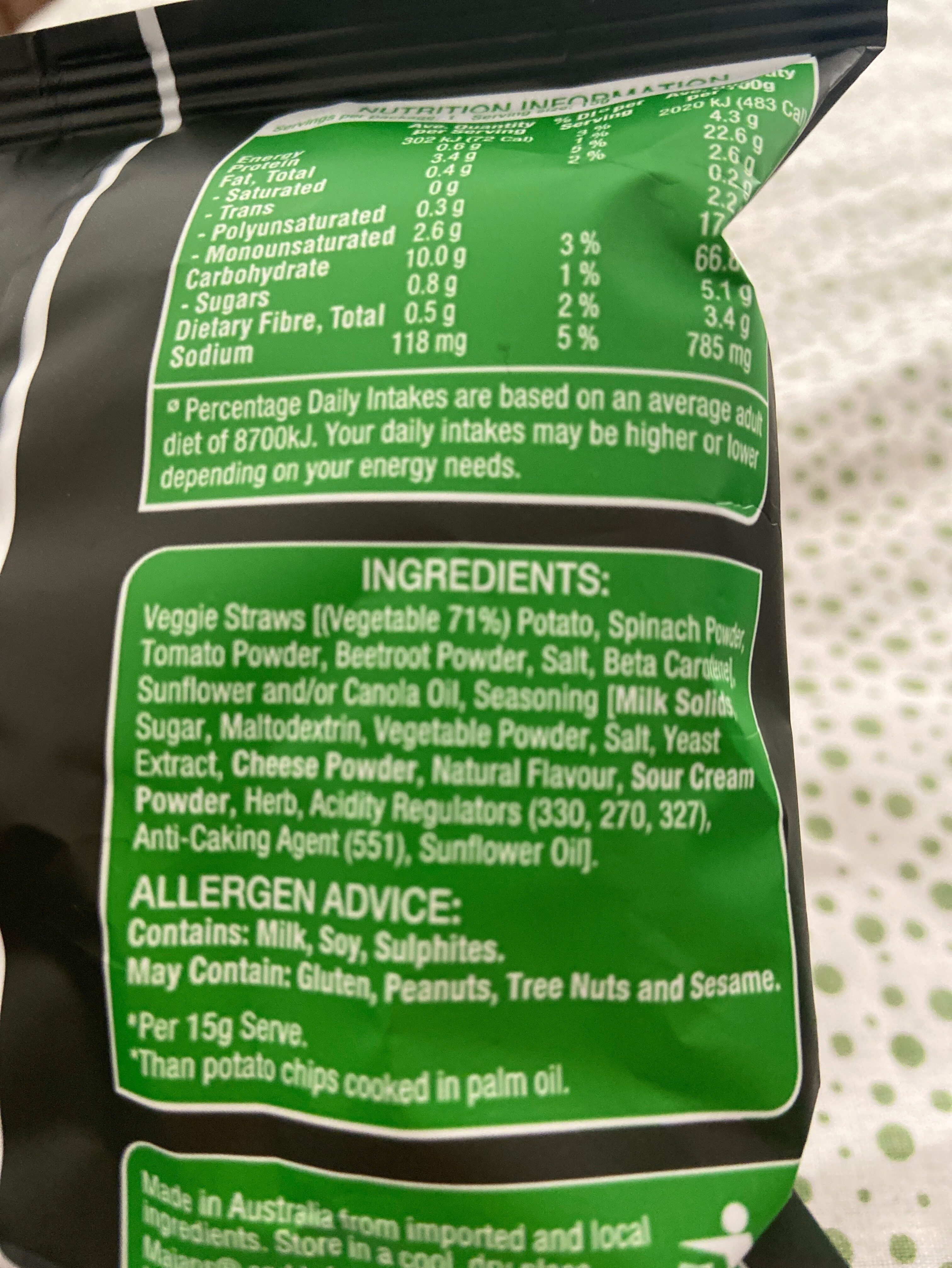Veggie straws - Majans - 15 g
This product page is not complete. You can help to complete it by editing it and adding more data from the photos we have, or by taking more photos using the app for Android or iPhone/iPad. Thank you!
×
Barcode: 9316401201610 (EAN / EAN-13)
Quantity: 15 g
Packaging: Plastic
Brands: Majans
Labels, certifications, awards: Australian made
Origin of ingredients: Imported and local
Link to the product page on the official site of the producer: http://www.majans.com
Countries where sold: Australia
Matching with your preferences
Environment
Packaging
Transportation
Report a problem
Data sources
Product added on by kiliweb
Last edit of product page on by roboto-app.
Product page also edited by danzan2001, ecoscore-impact-estimator, gluten-scan, openfoodfacts-contributors, packbot, yuka.sY2b0xO6T85zoF3NwEKvllZhC9Hmrm70By7jl3Kl7fC-ArnsYe5b37T2Gqo, yuka.sY2b0xO6T85zoF3NwEKvlnBiaIbOoAviaB_UvGaZ2feUNbntftRzy7DWP6s.








